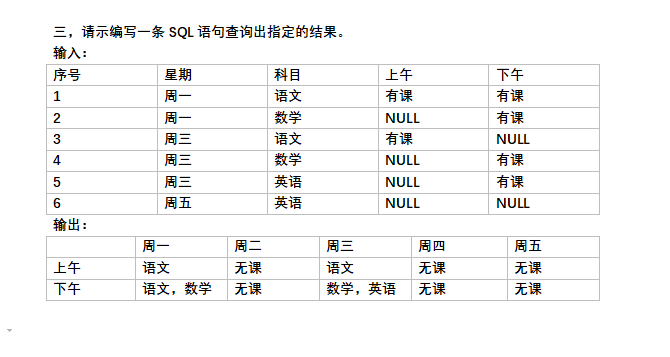I know that loops are slow in R and that I should try to do things in a vectorised manner instead.
But, why? Why are loops slow and apply is fast? apply calls several sub-functions -- that doesn\'t seem fast.
Update: I\'m sorry, the question was ill-posed. I was confusing vectorisation with apply. My question should have been,
\"Why is vectorisation faster?\"
Loops in R are slow for the same reason any interpreted language is slow: every
operation carries around a lot of extra baggage.
Look at R_execClosure in eval.c (this is the function called to call a
user-defined function). It\'s nearly 100 lines long and performs all sorts of
operations -- creating an environment for execution, assigning arguments into
the environment, etc.
Think how much less happens when you call a function in C (push args on to
stack, jump, pop args).
So that is why you get timings like these (as joran pointed out in the comment,
it\'s not actually apply that\'s being fast; it\'s the internal C loop in mean
that\'s being fast. apply is just regular old R code):
A = matrix(as.numeric(1:100000))
Using a loop: 0.342 seconds:
system.time({
Sum = 0
for (i in seq_along(A)) {
Sum = Sum + A[[i]]
}
Sum
})
Using sum: unmeasurably small:
sum(A)
It\'s a little disconcerting because, asymptotically, the loop is just as good
as sum; there\'s no practical reason it should be slow; it\'s just doing more
extra work each iteration.
So consider:
# 0.370 seconds
system.time({
I = 0
while (I < 100000) {
10
I = I + 1
}
})
# 0.743 seconds -- double the time just adding parentheses
system.time({
I = 0
while (I < 100000) {
((((((((((10))))))))))
I = I + 1
}
})
(That example was discovered by Radford Neal)
Because ( in R is an operator, and actually requires a name lookup every time you use it:
> `(` = function(x) 2
> (3)
[1] 2
Or, in general, interpreted operations (in any language) have more steps. Of course, those steps provide benefits as well: you couldn\'t do that ( trick in C.
It\'s not always the case that loops are slow and apply is fast. There\'s a nice discussion of this in the May, 2008, issue of R News:
Uwe Ligges and John Fox. R Help Desk: How can I avoid this loop or
make it faster? R News, 8(1):46-50, May 2008.
In the section \"Loops!\" (starting on pg 48), they say:
Many comments about R state that using loops is a particularly bad idea. This is not necessarily true. In certain cases, it is difficult to write vectorized code, or vectorized code may consume a huge amount of memory.
They further suggest:
- Initialize new objects to full length before the loop, rather
than increasing their size within the loop.
- Do not do things in a
loop that can be done outside the loop.
- Do not avoid loops simply
for the sake of avoiding loops.
They have a simple example where a for loop takes 1.3 sec but apply runs out of memory.
The only Answer to the Question posed is; loops are not slow if what you need to do is iterate over a set of data performing some function and that function or the operation is not vectorized. A for() loop will be as quick, in general, as apply(), but possibly a little bit slower than an lapply() call. The last point is well covered on SO, for example in this Answer, and applies if the code involved in setting up and operating the loop is a significant part of the overall computational burden of the loop.
Why many people think for() loops are slow is because they, the user, are writing bad code. In general (though there are several exceptions), if you need to expand/grow an object, that too will involve copying so you have both the overhead of copying and growing the object. This is not just restricted to loops, but if you copy/grow at each iteration of a loop, of course, the loop is going to be slow because you are incurring many copy/grow operations.
The general idiom for using for() loops in R is that you allocate the storage you require before the loop starts, and then fill in the object thus allocated. If you follow that idiom, loops will not be slow. This is what apply() manages for you, but it is just hidden from view.
Of course, if a vectorised function exists for the operation you are implementing with the for() loop, don\'t do that. Likewise, don\'t use apply() etc if a vectorised function exists (e.g. apply(foo, 2, mean) is better performed via colMeans(foo)).
Just as a comparison (don\'t read too much into it!): I ran a (very) simple for loop in R and in JavaScript in Chrome and IE 8.
Note that Chrome does compilation to native code, and R with the compiler package compiles to bytecode.
# In R 2.13.1, this took 500 ms
f <- function() { sum<-0.5; for(i in 1:1000000) sum<-sum+i; sum }
system.time( f() )
# And the compiled version took 130 ms
library(compiler)
g <- cmpfun(f)
system.time( g() )
@Gavin Simpson: Btw, it took 1162 ms in S-Plus...
And the \"same\" code as JavaScript:
// In IE8, this took 282 ms
// In Chrome 14.0, this took 4 ms
function f() {
var sum = 0.5;
for(i=1; i<=1000000; ++i) sum = sum + i;
return sum;
}
var start = new Date().getTime();
f();
time = new Date().getTime() - start;


